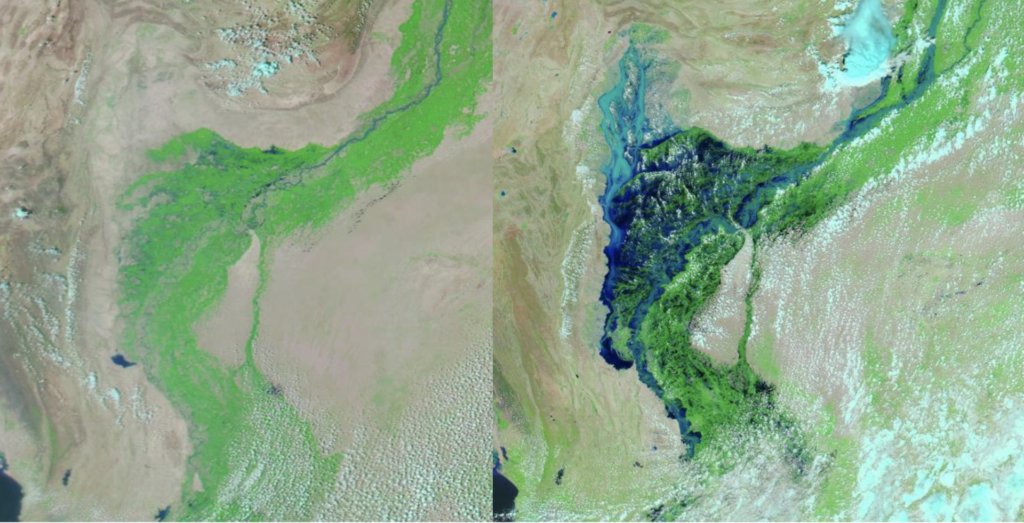While Europe deals with severe drought ‘thought to be one of the worst ever witnessed in the continent’, another country in Asia is dealing with the other side of the spectrum. Pakistan, a South Asian country having an area roughly equivalent to combined total of Germany and France and home to the fifth largest population in the world, has been flooded with excessive rains, the worst in the country’s history. A country whose rainfall average is barely 200 mm in a good year has seen rainfalls of more than 800 mm this year on average and above 1000 mm in some regions, resulting in uncontrollable urban and flash floods, landslides, across the country. More than 60% of the country, equivalent to the total area of the UK, is under water at the moment of writing this post, 1,000+ people have lost their lives while the survivors struggle to feed their families and cattle as most of the agrarian land has been lost[1].

A country that is home to Himalayas and to ~7.500 glaciers, more than anywhere in the world outside of the polar regions has been facing severe climate change over the past few years. I remember growing up in Pakistan through the 90s and 2000’s. Over the years, the climate has significantly changed for worse, I have seen air conditioning moving from luxury to a necessity. Just in the month of April/May this year when a European starts to get in summer spirits, Pakistan was already witnessing temperatures ranging above 50°C, highest in the world for those months. Pakistan only contributes 0.5% to global carbon emissions yet it is the country predicted to lose all the glaciers and henceforth water supplies first.
As researchers we must not sit idle and await the eventual doom, rather it is our duty to rise up to the occasion and raise our voice / come up with solution to deal with climate crisis. A successful public awareness and collaboration campaign similar to ozone layer depletion campaign[2] is the need of the hour to push back on anti-climate change narrative, raise awareness in the general populace and develop global policy to contain the effects.

This article was written by Sallar Ali Qazi as part of an ongoing series of scientific communications written and curated by BioTrib’s Early Stage Researchers.
Sallar Ali Qazi is researching Mechanical and Tribo-Chemical Wear Modelling of Artificial Joint Prostheses at Imperial College London, UK
References
[1] Pakistan: 2022 Monsoon Floods – Situation Report: https://reliefweb.int/report/pakistan/pakistan-2022-monsoon-floods-situation-report-no-03-26-august-2022.
[2] https://theconversation.com/the-ozone-hole-is-both-an-environmental-success-story-and-an-enduring-global-threat-100524

